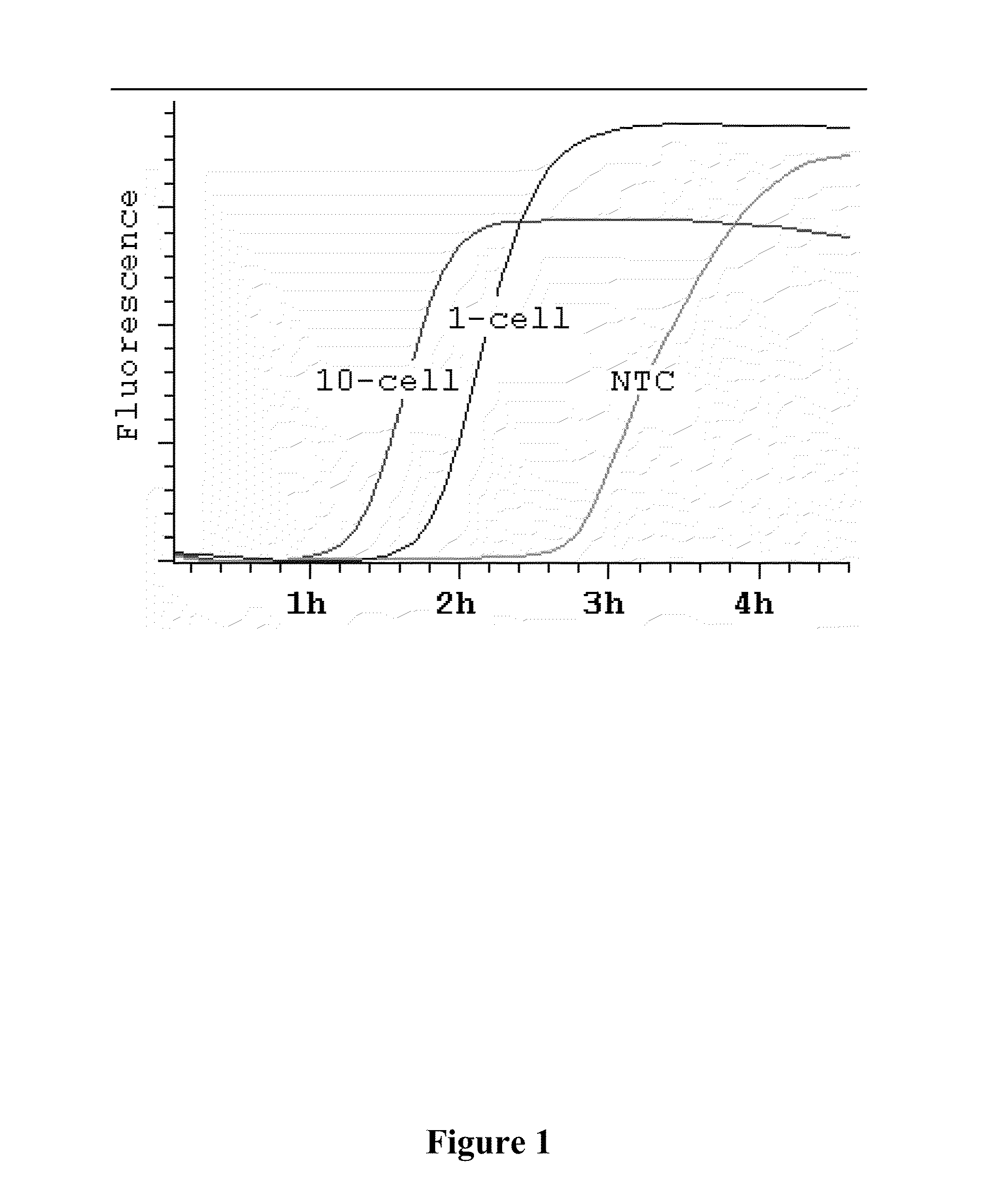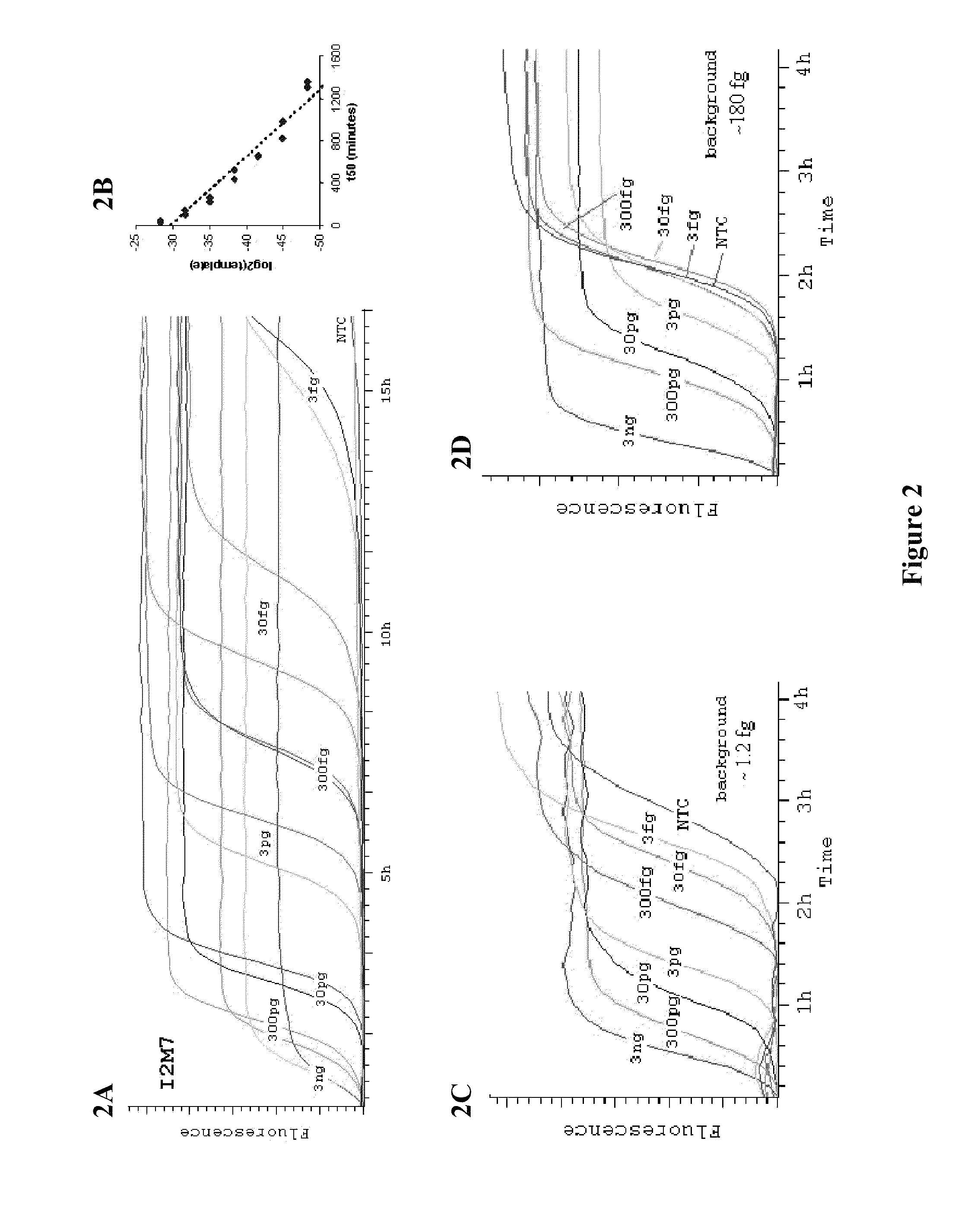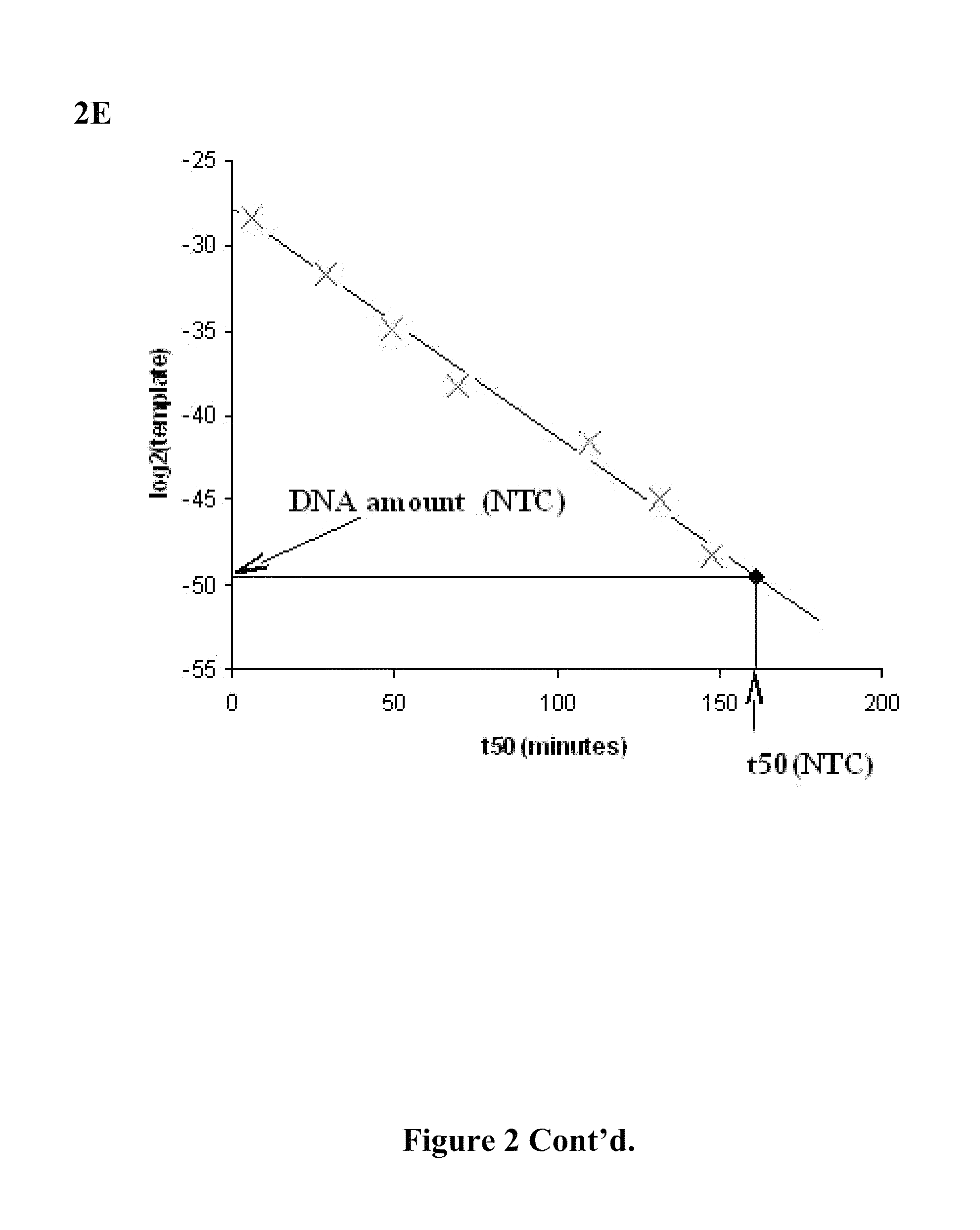Genomic library construction
a gene library and gene technology, applied in the field of single cell nucleic acid amplification methods, can solve the problems of microorganisms with smaller genomes and the difficulty of assembling contigs into discrete genomes, and achieve the effects of reducing the presence of hyperbranched dna, and removing hyperbranched dna structures
- Summary
- Abstract
- Description
- Claims
- Application Information
AI Technical Summary
Benefits of technology
Problems solved by technology
Method used
Image
Examples
example i
Real-Time Ultra-Low Background Isothermal Amplification
[0044]The present invention describes a method of polymerase cloning, “ploning,” a major technical leap in performing genome analyses at the single-cell level. Ploning provides whole genome amplification from a single DNA sequence with high-yield, high-fidelity, and without significant bias in terms of sequence coverage (Dean et al. (2002) Proc. Natl. Acad. Sci. U.S.A. 99:5261; Hosono et al. (2003) Genome Res. 13:954; Paez et al. (2004) Nucleic Acids Res. 32:e71, each of which is incorporated herein by reference in its entirety for all purposes).
[0045]It was hypothesized that the background amplification that currently plagues single-cell MDA arises from two sources: (1) exogenous DNA contamination and (2) endogenous template-independent primer-primer interactions. To assess each source as independently as possible, an ultra-sensitive, sequence-nonspecific detection system was developed (See Example II) to monitor the dynamics o...
example ii
Ultra-Sensitive, Sequence-Nonspecific Detection System
[0048]It was determined that MDA, like rolling-circle amplification (Lizardi et al. (1998) Nat. Genet. 19:225, incorporated herein by reference in its entirety for all purposes), has an exponential growth stage, and that the time it takes for an amplification to reach its 50% saturation level (t50) is a good summary statistic to capture the underlying amplification dynamics. There is a log-linear relationship between t50 and the amount of DNA templates (FIGS. 2A-B), thus providing a convenient way to estimate background levels. Specifically, the background was calculated by comparing amplification curves from a DNA dilution series with known concentrations. In an amplification system with little background, amplification curves for templates of different concentrations were well separated (FIG. 2C). In contrast, in the presence of background DNA contamination, amplification curves for templates with low concentrations are compres...
example iii
Ploning Single E. coli Genomes
[0055]Having optimized a protocol to achieve ultra-low exogenous background, an attempt to develop a procedure to plone single cells was pursued. This required a method of assessing whether the obtained amplicon was from truly from a single cell. It was determined that single cells prepared by standard flow-sorting were not suitable for amplification due to the difficulty of preventing contamination introduced during the sorting process. A system was therefore established that utilized a mixture of four E. coli strains (NR56, NR57, NR58, NR59, all derivatives of MG1655) that could be genotypically distinguished (see Example IV), and hence allowed verification that the obtained amplicon was indeed clonal. Based on Poisson statistics, when only one strain-specific marker was identified from an appropriate dilution of the mixed cell population, the probability that this amplification was from a single cell was 88%, which is similar to the success rate of f...
PUM
| Property | Measurement | Unit |
|---|---|---|
| mass | aaaaa | aaaaa |
| depth | aaaaa | aaaaa |
| volume | aaaaa | aaaaa |
Abstract
Description
Claims
Application Information
 Login to View More
Login to View More - R&D
- Intellectual Property
- Life Sciences
- Materials
- Tech Scout
- Unparalleled Data Quality
- Higher Quality Content
- 60% Fewer Hallucinations
Browse by: Latest US Patents, China's latest patents, Technical Efficacy Thesaurus, Application Domain, Technology Topic, Popular Technical Reports.
© 2025 PatSnap. All rights reserved.Legal|Privacy policy|Modern Slavery Act Transparency Statement|Sitemap|About US| Contact US: help@patsnap.com



